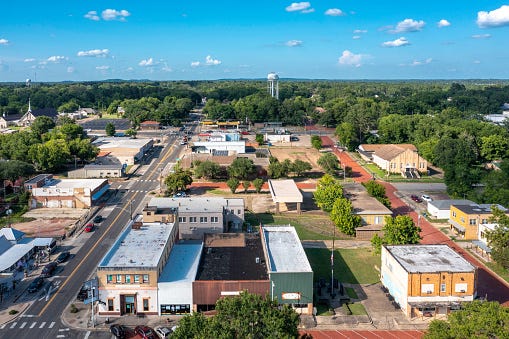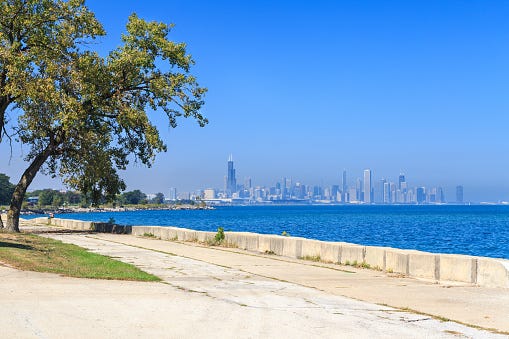What’s hotter than eating hot Cheetos in the summer in the Sun Belt?
Rampant inflation! It’s hard to cool down here!
Unlike in other parts of the country which have seen on average ~40yr high inflation according to September’s disappointing CPI report, the South has been hit hard not only by brutal hurricanes with strong winds and warming waters this year but also by financial whiplash including higher than normal nationwide inflation.
To take a step back, let’s first understand what is driving massive unusual price increases in the South unlike in the rest of the country. The Sun Belt, similar to the heartland has seen a resurgence in demand across all market segments since lockdowns began due to their attractive stable, mostly hot, duh, temperatures, reasonable less frothy home prices, an abundance of land and space for pets, and kids and more kids to roam free on their horses, and for those with the luxury of doing so, flexibility at home for WFH anywhere.
In return, inventory levels for housing compared to coastal metropolitan cities is greater. Acres of land instead of building after building staring in front of you is far more common across the southern states which means larger homes closer and away to the cities and more land that come with it at more affordable prices.
When something, such as a $15m NFT to Gucci bag is scarce, the price jacks up since there is less of it and it is deemed invaluable. In the South, with an abundance of land and not enough owners, home prices are lower which doesn’t break the bank. But of course, the downside to lower prices is fewer opportunities, people, experiences, etc. which draw people to places such as NYC in the first place!
However, as the financial investigator I am, I need to bring in the facts which tend to be negative since we’re talking about the stock market in 2022 after all. You can’t expect unicorns and rainbows anymore. That was 2020–2021 in the economy, not the world FYI if you were sleeping behind the wheel like the Fed these past 2 years with rock-bottom interest rates and speculative borrowing left and right.

Sticky South
While the rest of the U.S. saw an 8.5% yearly inflation rate in July, traditionally, the hottest month in the South in terms of temperature not store shelves, the South dealt with a whopping 9.4% rate. August fared a little better (but not by much) with a national 8.3% yearly inflation rate and an 8.9% rate in the South!
What caused this heat stroke?
Although metropolitan cities on the coasts such as NYC and San Francisco have seen a trickling back into offices as rents are soaring to over $5k and Sweetgreen lines out the door again, city dwellers aren’t feeling nearly as exhausted or hot as Southerners surprisingly due to two factors: weather and location, two things you cannot change, only move away from if you can afford it!
Down South from Atlanta to Miami, the yearly inflation rate stood at around 12% and the six cities of West Palm Beach, Miami, Fort Lauderdale, Tampa, and Roswell Georgi have witnessed the highest inflation rates across the entire country.

Let’s look into these main contributors further to unpack this heated question!
Gas prices: When everything is spread out, there are no yellow taxis all around like ants to transport one downtown in 10 mins. People in the Sunbelt + Heartland depend on cars daily to move around and as a result, whether you choose to pay for an EV (learn here about the savings vs drawbacks) or an old-fashioned gas-powered one, it all costs at the pump more than ever before as Saudi Arabia and Russia have further limited oil and gas supply ahead of the winter months.
Heat + AC: We can’t talk about all the heat with inflation without mentioning the real culprit causing the heated debate. The hot weather itself! With warmer temps even into the fall months nowadays, energy bills have continued to skyrocket and it’s not fun.
Housing: Wealthier homeowners who have the luxury of working from home and migrate to the South to cut their tax bills in half, have not only raised the costs of living and bumped up prices for local residents who are less affluent than them, but they’ve also taken over with primary and secondary properties, causing limited housing shortages to occur in cities such as Miami and Atlanta, kicking out current homeowners. Read here about the details.
While the Fed’s hawkish moves won’t’ be able to cool down the actual temperature, it can control or tame at least the heated debate surrounding inflation by engineering a soft landing!
However, even if the Fed is able to do this, clearly, consumers are still relentless and inflation is at 40 yr highs despite 4x rate hikes this year alone, everything takes time.
Luckily, 2 out of the 3 reasons to higher than normal inflation can be eliminated thanks to the cooler months. Once they roll in, hopefully, residents will see some reprieve.
As energy markets have soared and companies continue to price gauge during the Russia/Ukraine crisis, we hope gas stays at moderate levels and trickles down to ~$3 preferably compared to the summer months when it stood at $7 a gallon in some places, currently at $6 in California where driving is as popular as in the South!!
And lastly, when it comes to the wealthy East Coasters who’ve migrated to the South to get their tan on and tax bills halved, although they may have been spooked by hurricane Ian and Desantis, they seem to stay put for now, or for as long as they can until the market doesn’t upset them enough or inflation bites their wallets too hard!
No one is immune from higher prices!
We all have to stay cool, move, and live somewhere! No pressure Powell.

